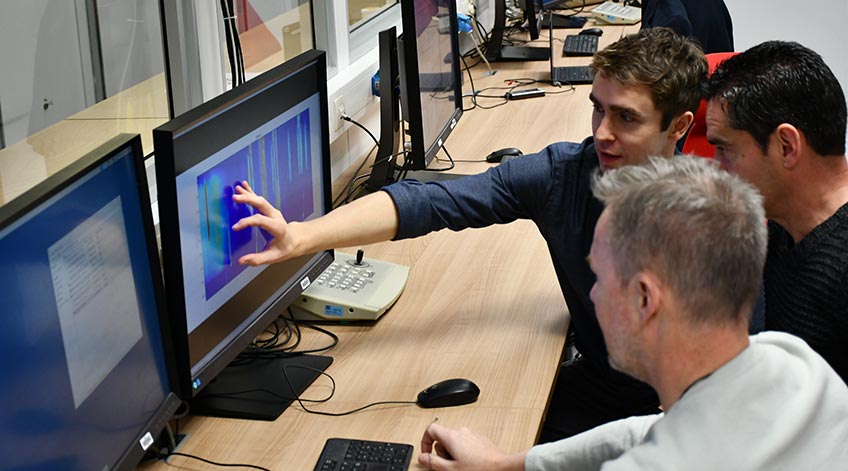Novel Research Highlights Critical Barriers to Extreme Fast Charging of Lithium-Ion Batteries

Donal Finegan uses high-energy synchrotron X-rays to inform his ongoing battery degradation research at NREL. Photo courtesy of ESRF
The rate at which electric vehicles (EVs) charge continues to be a critical barrier to their widespread adoption. NREL researchers are determined to meet the extreme-fast-charging demands of consumers. To compete with the average refuel time of conventional vehicles, EVs must be capable of charging in 15 minutes or less.
However, efforts to meet that goal using high-capacity, lithium-ion batteries are challenged by a phenomenon called lithium plating, where lithium attaches to graphite particles within the cell instead of inserting itself into the graphite for stable storage. Once lithium plating occurs, lithium-ion batteries are subject to accelerated degradation and increased risk of failure. To meet this challenge, researchers used high-speed synchrotron X-ray diffraction to gain insight into the conditions that lead to lithium plating.
Their study, performed at the European Synchrotron and detailed in a recent Energy & Environmental Science article, provided real-time depth profiles of the graphite’s lithiation stages as batteries underwent different rates of charge. Researchers used high spatial resolution, with a depth resolution of 3 micrometers and time resolution of 0.5 seconds, to observe the movement of lithium in the battery cell while charging. To simulate real-world conditions, researchers conducted these experiments at ambient temperatures between 20°C and 30°C.
“When charging, lithium goes from one electrode to another,” explained Donal Finegan, an NREL scientist and lead author of the article. “In each electrode, there are graphite particles in which the lithium rests following charge, providing the battery with a means to store energy in a stable way. However, the particles also present obstacles to lithium trying to get beyond them to other particles, making it harder for these batteries to charge quickly.”
Key findings of the study highlight the uneven charging of lithium-ion batteries, especially at increased charging rates. That behavior results in significant lithium plating on graphite particles near the separator, which prevents the batteries from charging to their full capacity. Furthermore, once lithium plating occurs, the cell becomes increasingly unstable, potentially leading to thermal runaway and battery failure.
Researchers can use data collected during these experiments to guide and validate electrochemical and multi-physics models for predicting the conditions that cause lithium plating. They can also use the findings to develop methods for assessing the state-of-health of battery cells and the occurrence of lithium plating. By identifying heterogeneities at the synchrotron, researchers can develop methods to assess batteries in standard environments.
The results of this study also help pinpoint areas in need of future research. Now that a technique to quantify lithium plating and state of charge variation across the depth of an operating electrode has been demonstrated, methods to improve the fast charging capabilities of batteries can be explored with a benchmark comparison. Promising approaches to improve the fast charge ability of electrodes include low tortuosity electrodes, more ionically conductive electrolytes, different charging protocols, or charging at elevated temperatures. This work is expected to help achieve the goal of charging EVs in less than 15 minutes.
NREL scientists, including Donal Finegan, Andrew Colclasure, and Kandler Smith, partnered with the University of Oslo, University College London, Massachusetts Institute of Technology, MAX IV, and the European Synchrotron on this research.
Learn more about NREL’s energy storage and transportation and mobility research.
Last Updated May 28, 2025
